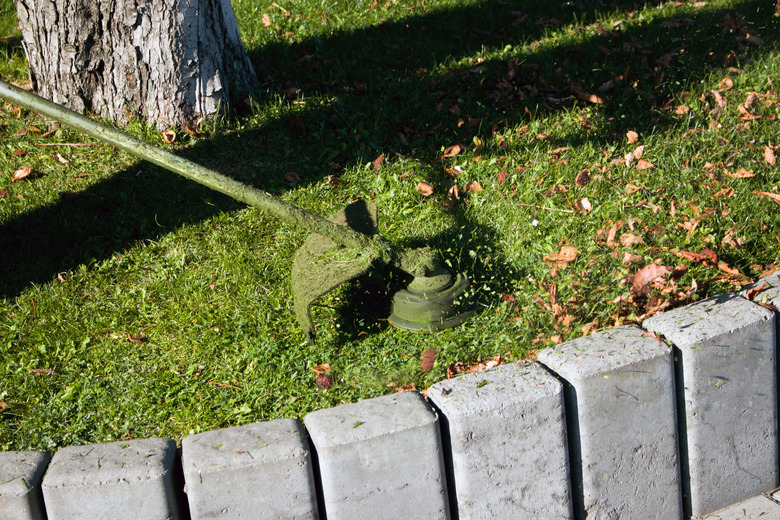How To Adjust The Carburetor On A Stihl FS 36 Trimmer
We may receive a commission on purchases made from links.
The Stihl FS 36 trimmer is a lightweight model with a two-stroke engine powerful enough for most weed-clearing jobs around the home. It features a small engine and a curved shaft that make it a perfect substitute for a lawn mower for maintaining small, grassy areas. Two-stroke engines run on a mixture of gas and oil and don't have an oil reservoir. As part of regular maintenance, you should clean or replace the air filter and spark plugs, and you should also adjust the carburetor to keep it running in tip-top form.
Signs That the Carburetor Needs Tuning
Signs That the Carburetor Needs Tuning
When the carburetor is out of adjustment, the fuel/air mixture is either too lean, meaning there isn't enough fuel, or too rich, meaning there's too much fuel. Both conditions cause the engine to perform poorly. If the mixture is lean, the engine will race, and it won't have much power, and if the mixture is rich, the engine will run sluggishly and stall frequently. Adjusting the carburetor can alleviate these problems provided that the air filter is clean, and the spark plug is working properly.
Stihl provides three adjustment screws on the FS 36. One, marked LA, is for adjusting the idle. Another, marked L, is for adjusting low-speed operation, and the third, marked H, is for adjusting high-speed operation. They are arranged in a triangle on the carburetor housing with the LA screw at the bottom. You don't always need to adjust all three screws, but when you do, you need to follow a particular sequence.
Things Needed
How to Adjust an FS 36 Carburetor
How to Adjust an FS 36 Carburetor
Before you do the adjustment, it's important to clean or replace the air filter because a dirty filter won't allow air to circulate, and the adjustment will be wrong. You should also check the spark plug and replace it if it's dirty or the gap has worn too wide, and you should clean or replace the fuel filter. Failure to do this will also result in a misadjustment.
1. Make a Preliminary Adjustment
Use a flat-head screwdriver or the carburetor adjustment tool provided by Stihl to turn all three screws clockwise as far as they will go. Then, back off each screw by one full turn.
2. Adjust the Idle Speed
Start the trimmer and let it idle. Turn the LA screw clockwise or counterclockwise as needed to reach the point where the engine is idling at the lowest speed possible before it stalls.
3. Adjust the Low-Speed Screw
With the engine idling, turn the L screw clockwise to a point at which the engine is starved for fuel and begins to stall. Back off the screw and keep going until the engine starts to get too much fuel and again begins to stall. Find the point between these two extremes at which the engine is purring, which is usually midway between them.
4. Adjust the High-Speed Screw
Set the trimmer flat on a table with the head hanging over and engage the throttle all the way to make the engine run at full speed. Turn the H screw clockwise or counterclockwise as needed to get the best performance. If you tighten the screw too much, the engine will race, sputter and eventually stall, and if you loosen it too much, the engine will sound heavy and labored and will start sputtering and stalling. The correct adjustment is midway between these at the point where the engine sounds best.
5. Make a Final Idle Adjustment
Adjusting the L and H screws affects the idle adjustment, so after disengaging the throttle, turn the idle screw to find the adjustment at which the engine is running smoothly but as slowly as possible.
